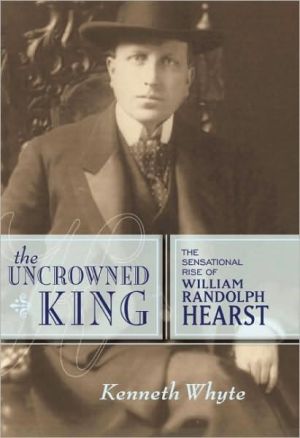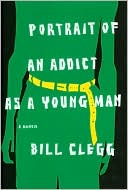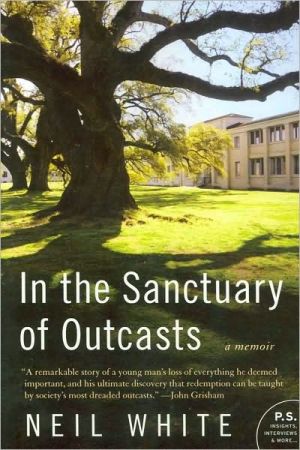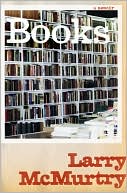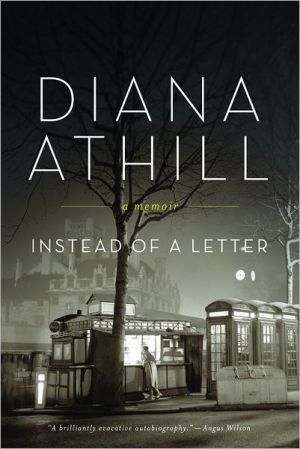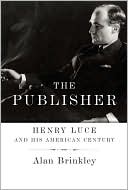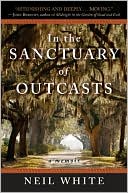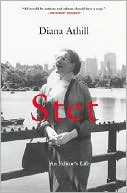The Uncrowned King: The Sensational Rise of William Randolph Hearst
“I’ve been watching him, and I notice that when he wants cake, he wants cake; and he wants it now. And I notice that after a while he gets his cake.” –Senator George Hearst, on his son, William Randolph Hearst\ A lively, unexpected and impeccably researched piece of popular history, The Uncrowned King reveals how an unheralded young newspaperman from San Francisco walked into the media capital of the world and created the most successful daily of his time, pushing the medium to an...
Search in google:
More than a century ago, a young William Randolph Hearst stormed the Manhattan publishing establishment and usurped Joseph Pulitzer as the dominant force in the most hotly contested newspaper market the world has ever seen. In three years, Hearst built the foundation of one of America's greatest media empires, yet his reputation as a journalist has always been haunted by allegations of sensationalism, self-promotion, warmongering, and outright fakery. In this major re-estimation of Hearst's early years at his New York Journal, renowned newspaper editor and magazine publisher Kenneth Whyte brings to life the early career of the world's first great media mogul. His lively, riveting, page-turning recreation of Hearst's New York years reveals a progressive young man of high ideals and huge ambition: hardly the Citizen Kane of popular imagination. Bursting with larger-than-life personalities, The Uncrowned King is a provocative addition to the shelf of great books of popular social history—one that will change forever the way we remember one of the most powerful and fascinating citizens of the twentieth century. The Barnes & Noble Review Canadian journalist Kenneth Whyte wants you to forget everything you think you know about William Randolph Hearst. In this lively revisionist biography of the newspaper icon, which covers the three years after his 1895 purchase of the New York Journal, Whyte argues that Hearst's terrible reputation, solidified by Orson Welles's thinly disguised portrait in the "scurrilous" Citizen Kane, is undeserved. True, Hearst's Journal engaged in a cutthroat circulation war with Joseph Pulitzer's New York World, pursued its share of lurid and sensationalistic stories (the phrase "yellow journalism" was coined in relation to the two men's rivalry). But Whyte ably demonstrates that Hearst, barely into his 30s when he took over the Journal, just as often published substantive coverage of political and social issues. The book focuses on two key events in the paper's maturation, the dramatic 1896 presidential election between William Jennings Bryan and William McKinley and the 1898 Spanish-American War. W. A. Swanberg's influential -- and unflattering -- 1961 biography, Citizen Hearst, called Hearst's coverage of the run-up to the war "the most disgraceful example of journalistic falsehood ever seen." Whyte, however, denies that Hearst attempted to instigate a war to drive up circulation, casting doubt on what he calls the publisher's "most famous utterance," a telegram to a Journal artist who'd asked permission to leave Cuba because "there will be no war": "You furnish the pictures, and I'll furnish the war." After the American victory, Hearst called a truce with Pulitzer, and both men toned down their papers' excesses, bringing a close to a fierce and fascinating episode in the history of American journalism. --Barbara Spindel
Chapter One\ \ It is difficult to say precisely when William Randolph Hearst first hit on the idea of breaking into New York publishing, but it is clear that by 1889 he would not be satisfied until he did. He was twenty-six years old and already a minor newspaper phenomenon. Three years earlier he had been handed the San Francisco Examiner by his father, who had owned it for six years, accomplishing little beyond a string of annual losses. With no more than a few months of professional journalistic experience, the younger Hearst announced himself as proprietor and editor and promptly established the Examiner as the most attractive, intelligent, and exuberant daily on the Pacific coast. Its circulation more than doubled. Its losses evaporated. It rivaled the mighty San Francisco Chronicle as the leading newspaper in the West. The trade journals credited Hearst with a “masterstroke of enterprise.” It seems everyone who knew the Examiner was impressed by it, save Hearst, who was keenly aware that whatever he had accomplished in San Francisco, he had not done anything in New York.\ His expansion plans were in fact larger than one city. Hearst envisioned a chain of newspapers, the individual titles of which would share content, management, and other resources, reducing costs and magnifying the proprietor’s voice and influence. But a chain was unthinkable without New York. It was the liveliest and most competitive newspaper city in the world, and the center of media and commercial influence in the United States. New York was a goal in itself.\ Out of the blue, on Thanksgiving Day 1889, Charles M. Palmer, an experienced midwestern newspaper executive specializing in circulation, received a telegram from Hearst inviting him to join the Examiner and asking what salary he would expect. Palmer signed on, excited at the comprehensiveness of Hearst’s expansion plans and the prospect of an imminent break into the New York market. He was also impressed by Hearst’s manner, a curious mixture of deference and self-assurance. George Pancoast, Hearst’s private secretary and frequent companion, also learned of the New York initiative around this time. As they were crossing San Francisco Bay on a ferry, Hearst took from his pocket a railway timetable and drew circles around the names of several large cities, saying, “George, some day a paper there, and there, and there.” New York he circled twice.\ Hearst’s plans were made public that autumn when the New York Press revealed that he had been “trying to induce his father to set him up in business here, either by buying some old paper or establishing a new one.” A staggeringly wealthy senator from California, the Honorable George Hearst had cheerfully spent his best years in frontier mining camps and scrappy western towns, exercising an uncanny ability to charm metal out of rock. Before taking up politics, he had been instrumental in the development of four of the richest mines yet discovered in America: Nevada’s Comstock Lode, Utah’s Ontario Mine, Montana’s Anaconda, and South Dakota’s Homestake. The Press guessed George Hearst was worth $20 million. It reported that the senator had been in upstate New York over the summer to watch his thoroughbreds run, and that he had this to say about his son’s New York newspaper ambitions: “There ’s plenty of money if the boy really has his heart set on it. But I am in hopes he will conclude after a while that one big paper is enough for one man to run.”\ \ It’s unlikely that Will Hearst viewed his father’s caution as a serious obstacle. The old man was a soft touch. Will also had himself to blame for his father’s “one big paper is enough” reservation. He had been complaining incessantly to the senator about his competitive difficulties in San Francisco. He had started a newspaper war with the Chronicle and, to his surprise and consternation, its owner, Michael de Young, was fighting back. De Young had announced a series of new investments in his paper, including the construction of an impressive new headquarters and Will had pleaded for more paternal support to keep pace. “I am working awfully hard and getting a little bit tired and a little bit discouraged,” he wrote his father. “That damned Chronicle building is a tremendous advertisement and helps them immensely. Everybody talks about it and everybody thinks it is pretty fine and there is great difficulty getting subscribers away from a paper that is doing a big thing like that. The effect upon the advertiser is even worse. Mr. De Young told a friend the other day that since he had started his building his income [from the paper] had almost doubled. . . . How long do you suppose it will be before we can put up a building – a stunner that will knock his endways and make him as sick as he is now making me[?]”\ George Hearst’s hesitancy about his son’s New York plans may also have been lip service to Phoebe Apperson Hearst. The senator was constantly reminded by his wife that he had lost hundreds of thousands on the Examiner before it had begun to pay, and that was on top of the hundreds of thousands he was throwing away on his ponies. Though one of the richest families in America, and a small one at that, the three Hearsts were diversely ambitious and variously extravagant; there was not enough money to go around. At the start of 1890, they were spending at a pace of almost $1 million annualized. Phoebe was generally the voice of restraint, seeking to rein in her men not out of prudence so much as out of concern for her own spending and philanthropic priorities. Sometimes the men listened to her; more often, as in this instance, not.\ The senator’s misgivings appear to have lasted no longer than it took the Press to get them in print. He was soon reported to have made unsuccessful bids for the New York Times and the New York Sun, as well as a $5-million play for the mighty New York Herald. The accuracy of these reports is uncertain, but any discussions toward the purchase of a New York title would have made Will’s dream seem tantalizingly close. And just then everything changed.\ Late in 1890, Senator Hearst was diagnosed with “a complication of diseases” rooted in “a serious derangement of the bowel” – in a word, cancer. He received first-rate medical attention and fought bravely against the illness, but it advanced quickly. Around seven o’clock on the evening of February 28, 1891, he slipped into a coma. Phoebe was called from dinner and was joined at his bedside in their Washington mansion by Will, a family friend, and the household staff. All were present when George died at 9:10 p.m, with Phoebe holding his hand. “So quickly and easily did he pass away,” said one report, “that Mrs. Hearst did not know he was dead until so informed by Dr. Ward.”\ George Hearst was remembered fondly as a tall, rumpled man with a great beard, a constant smile, and kindly, genial ways. Eulogies played up the incongruity of his humble origins and lack of formal education, and his spectacular rise to riches and high political office. There was much amusement at his love of horses, card games, and drink. It was said that “only such an amount of culture had attached to him as would necessarily be forced upon a man whose household was presided over by a model wife, who was a society leader having practically limitless wealth at her command.” That characterization of George Hearst has persisted over the years, with much of the warmth wrung from it. He is portrayed in his son’s most recent biography as an “uncouth, loud, and semi-literate” hick who drank too much, neglected his family, and bought his way into the Senate. The recent HBO drama Deadwood presents him as a sociopathic tycoon who murders his way to riches.\ Senator Hearst was indeed a child of the Missouri frontier, but he hardly grew up wild. The family was patrician by local standards. George Hearst’s father was a man of means, the largest slave owner in Meramec Township, and a force in local politics. His mother had some education and was known for her cashmere shawls and leghorn bonnets. George did not spend a lot of his childhood in the classroom, mostly because there was no schoolhouse nearby, but he had a good head and he eventually completed enough of grade school to graduate from the Franklin County Mining School in 1838. He was expected to study for the bar, but then his father passed away, leaving debts that George took upon himself to clear. Sufficiently literate to teach himself geology and mineralogy from borrowed texts, George earned his first financial stake by applying the efficient lead-mining practices he learned from books to mining properties considered worthless by experienced Missouri operators.\ George Hearst took his knowledge west, made and lost several fortunes, and gained an international reputation as a mining analyst. He also became expert in the bewilderingly complex legal dimensions of his trade (the protection of a single claim could require litigation of twenty or thirty separate suits). His colleagues marveled at his shrewdness and cool judgment, which seemed only to improve in times of uncertainty or crisis. They also valued his personal qualities: he was cheerful, open, unaffected, honest, sensible, independent of mind, and innately dignified. He was a beloved figure in the mining belt. Colleagues sought his advice on personal as well as commercial matters. He dispensed his counsel in “wise, original and homely thoughts and phrases,” flavored with the musical drawl of his native Missouri. His personal magnetism kept him in some of the best company available in the western states. His business partners included California attorney general and U.S. senator William Morris Stewart, U.S. senator James Graham Fair, and Nevada City mayor Hamlet Davis. Among his friends were U.S. Supreme Court justice Stephen J. Field, Chief Justice of the Supreme Court of California Niles Searls, and Ninth Circuit judge Lorenzo Sawyer. Mark Twain was a drinking buddy, a business associate, and an admirer of George’s self-reliance and political judgment.\ Senator Hearst’s “model wife” might not have registered the precise moment of his passing, but she knew exactly what to do once he was gone. Phoebe was a formidable woman in her own right. Tiny, dark-haired, and handsome in a severe manner, she was given to lavender gowns, antique lace, tight corsets, and show-stopping rubies and diamonds. She was Washington’s most celebrated hostess, the “philanthropic grande dame” of the capital and its “arbiter of unsullied elegance,” by one newspaper report. Just two years prior to her husband’s death, she had opened their Dupont Circle mansion with a costume ball to commemorate Washington’s birthday. TheWashington Post deemed it “by far the most brilliant event of its kind” ever held in the city. The flowers alone were rumored to have cost $25,000 (the reporter who wrote the story would have been lucky to earn $25 a week). The party favors included “reticules of flowered silk, amber and tortoise shell combs and clusters of three ostrich tips for the hair. Those of the gentlemen were silver medals cut with colonial cocked hats and shields, pen wipers of white kid embroidered in flowers and tiny buckets of California redwood in the form of pin cushions.” So never mind that the humble senator might have been perfectly content with a quick drop in a pine box. Phoebe ’s reputation demanded she give him a glorious send-off.\ The ceremonies began with George Hearst’s body lying in state for the better part of a week. A memorial service was held in Washington at Saint John’s Episcopal Church, the president and Mrs. Benjamin Harrison in attendance. Afterward, the casket, Phoebe, Will, and a large party of senators, congressmen, friends, and retainers boarded a special train, dyed Titian red, for the week-long ride back west. George ’s body was displayed for four more days at Grace Episcopal Cathedral in San Francisco, attracting thousands of mourners, even in hard rains.\ The funeral service was Phoebe ’s main event. The governor of the state and the city’s mayor were among the honorary pallbearers; the widow’s society friends sat in assigned pews. She transformed the church into a garden, with palms and evergreens crowding every niche, and a pair of seven-foot white flower crosses bracketing the altar. Great streams of blossoms hung from every arch and rafter. It was an exhibition of “gems and treasures of the florist’s art such as have rarely been brought together to do honor to the dead,” gushed the Examiner. Will’s daily had made its own contribution to the display. Sitting like a billboard in front of the casket was a blue and white floral representation of the paper’s front page, featuring a portrait of the senator.\ After the service, Phoebe left the church on Will’s arm to lead a slow ten-block procession to Laurel Hill Cemetery. The hearse was drawn by four jet-black horses. “The strains of the dirges and the long roll of the muffled drums were the only sounds above the patter of the rain,” reported the Examiner. Fifteen thousand people gathered in the steady drizzle to watch the cortege pass. The crowd at the cemetery gates had to be cleared to permit the family to enter. Sixteen days after his last breath, the senator was finally laid to rest. Pheobe and Will were last to leave the casket.\ If Grace Episcopal had been to Phoebe’s taste, the funeral train’s return east sans casket was nearer to George ’s style. An Indiana temperance crusader whose own train happened to be trailing the Hearst party complained that its passengers engaged in a coast-to-coast debauch, fueled by wines donated by California vineyards. The front page of the starchy New York Times reported that privately marked cases of wine and hundreds of empties were loaded on and off the train near El Paso, Texas. Witnesses declared that tier upon tier of wine cases were stacked in the dining car and that the Hearst party “did not have a drip of water on their train but drank wine altogether, using orange wine to quench their thirst.” Congress was indignant at the allegations, especially as it was obliged to pick up the tab. The cost of the trip was a record $21,322.55, which led to legislation limiting government spending on congressional funerals to the costs of embalming and transporting the body home (the bill was never enacted).\ In the weeks before the senator’s death, newspapers had speculated as to the settlement of the Hearst estate. Valued at between eighteen and twenty million, it included several outstanding mining properties and perhaps a million acres in land. The betting was that Will, as the only child, would be the sole heir. In fact, he was shut out. Everything regarding the ownership, management, and disposition of the assets fell to Phoebe. The senator had written, “I commend my son, William R. Hearst, to my said wife, having full confidence that she will make suitable provisions for him, but in the event of the marriage of my said wife after my death, I hereby give and bequeath to my said son all of my said property that may remain in the possession of my said wife at that date.”\ Will Hearst now had a lot to absorb. Notwithstanding that his father had been away in mining camps for much of his life, there had been a bond between them. Will was his father’s boy in many respects. There was a physical resemblance: the fair hair, the long face, the tall stature and sloped shoulders. Each possessed cool judgment and a powerful mind with a practical bent. Will also had some of George ’s gentleness and amiability (although little of his freewheeling charm). They had drawn close as Will had matured, primarily through their shared interests in publishing and politics. Many people, starting with Phoebe, had held the senator’s simple ways against him, but Will had not. He favored competence and accomplishment over manners and appearances, an attitude he had adopted from George. He loved and admired his father, and his bereavement had to have been profound. It would have especially pained him that George had doubted his maturity and financial abilities, and had not seen fit to leave him an independent legacy. He must have cringed to recall his panicked pleas for another “million or a million and a half or two million” with which to fight the Chronicle.\ Will appears to have blamed himself for his father’s decision (a verdict echoed by his biographers), yet odds on a full inheritance had always been slim. The senator’s relations with his son were far less important to the disposition of his estate than were his relationship with his wife and the unorthodox terms of their marriage.
Author's Note 1Prologue: Nothing By Halves 31 When He Wants Cake, He Wants Cake 72 Is God In? 473 A Great Deal More Than Money 764 A Kind of Rumba Accompanied by Snapping Fingers 995 Like a Blast Furnace, a Hundred Times Multiplied 1216 A Large Brute of Some Utterly New Species 1457 Skin the East and Skin the Rich 1678 Four Sensations and the Morals Police 1969 Two Warm Babes and a Hot Hansom 22710 Taking Chances No Correspondent Ever Took 25511 Only a Hero Can Sit for a Month on a Hotel Porch 27912 To Slay a Dragon and Free a Damsel in Distress 31213 Uncrowned King of an Educated Democracy 34014 Suddenly the Dinnerware Began to Vibrate 36215 As I Write, Ambulance Trains Are Bringing the Wounded 40016 Standing in the First Rank of American Journalism, Feeling Blue 442Notes 467Selected Sources and Bibliography 505Image Permissions 513Acknowledgements 517Index 519
\ Jack RosenthalThis is not a new portrait. In The Chief, his masterly biography of Hearst's whole life, published in 2000, David Nasaw drew similar conclusions that challenged the historical Hearst mythology. Whyte nevertheless presents another, arresting portrait—of the emerging power of the press at the end of the 19th century.\ —The New York Times\ \ \ \ \ James RosenExhaustively researched and elegantly written, The Uncrowned King brims with charming characters and stories. It deftly captures the bygone era of Gilded Age newspapering, when rival millionaire publishers launched epic crusades and talent raids, built skyscrapers and yachts as monuments to their success and staged stunts and promotions to captivate a city teeming with aristocrats and immigrants. In making this valuable contribution to the literature of Hearst and the history of journalism, Whyte reminds us how much fun newspapers used to be, how central a role they once occupied—dozens of them, churning out as many as 40 editions a day—in the American metropolis.\ —The Washington Post\ \ \ Publishers WeeklyThe conventional understanding of newspaper magnate Hearst as haunted megalomaniac, cynical purveyor of prurience and jingoistic instigator of the Spanish-American War gets a major challenge in this scintillating biographical study. Maclean's editor Whyte covers the years from 1895 to 1898, when Hearst took a revamped New York Journal to the top of the newspaper market by way of a bitter circulation war with Joseph Pulitzer's rival New York World. Whyte styles Hearst a brilliant and creative media entrepreneur with a gift for managing high-strung (and often drunken) subordinates, progressive politics and a sincere social conscience that animated his paper's crusading journalism. Even Hearst's agitation for war with Spain, Whyte contends, was more justifiable and journalistically responsible than is thought-and may have helped forestall a "genocide" in Cuba. Whyte considers the "yellow journalism" slur often hurled at Hearst a compliment; he finds the Journal to be "a demanding, sophisticated read" that used emotion and drama to draw readers into reporting of real significance. No slouch himself when it comes to colorful profiles and engrossing narrative, Whyte makes Hearst's rise an entertaining saga of newspapering's heroic age, when the popular press became an unofficial pillar of democracy. Photos. (Jan.)\ Copyright © Reed Business Information, a division of Reed Elsevier Inc. All rights reserved.\ \ \ \ \ Kirkus ReviewsLiterate biography of the real-life Citizen Kane. William Randolph Hearst parlayed a fortunate early life-his father was a U.S. senator, his mother a famed socialite-into a fortune, though his vehicle was an unusual one in a time of robber barons, railroad and shipping magnates and great bankers. As Maclean's publisher and editor-in-chief Whyte shows, Hearst, shut out of his father's will, bought a struggling New York daily newspaper, the Morning Journal, and turned it into a muckraking tabloid, sometime force for social good and advertising moneymaker that pushed him to prominence. Hearst was a hands-on publisher whose journalistic method might be called Social Darwinist. While running a San Francisco newspaper at the start of his career, he called, for instance, for "men who come out west in the hopeful buoyancy of youth for the purpose of making their fortunes and not a worthless scum that has been carried there by the eddies of repeated failures." For all the flaws Orson Welles would rightly ascribe to him, Hearst was a model publisher, as Whyte clearly appreciates. At all his newspapers, he was closely involved with not only the daily content but also with design, advertising, circulation, staffing and every other aspect of its operations. He also insisted on hiring the best writers he could find, and he let them write. Somewhere along the way, when the riches poured in and the political power accrued, Hearst determined to bring his white-man's-burden message home, gaining renown-notoriety, many would say-for turning his budding newspaper empire to the cause of overthrowing the last of the Spanish Empire, eagerly advocating the armed interventions that would become known as theSpanish-American War. Whyte capably charts Hearst's trajectory to the early 1900s, so there's plenty left for a sequel. Meanwhile, this volume is a solid entry in the history of journalism, and of the American Empire.\ \ \ \ \ The Barnes & Noble ReviewCanadian journalist Kenneth Whyte wants you to forget everything you think you know about William Randolph Hearst. In this lively revisionist biography of the newspaper icon, which covers the three years after his 1895 purchase of the New York Journal, Whyte argues that Hearst's terrible reputation, solidified by Orson Welles's thinly disguised portrait in the "scurrilous" Citizen Kane, is undeserved. True, Hearst's Journal engaged in a cutthroat circulation war with Joseph Pulitzer's New York World, pursued its share of lurid and sensationalistic stories (the phrase "yellow journalism" was coined in relation to the two men's rivalry). But Whyte ably demonstrates that Hearst, barely into his 30s when he took over the Journal, just as often published substantive coverage of political and social issues. The book focuses on two key events in the paper's maturation, the dramatic 1896 presidential election between William Jennings Bryan and William McKinley and the 1898 Spanish-American War. W. A. Swanberg's influential -- and unflattering -- 1961 biography, Citizen Hearst, called Hearst's coverage of the run-up to the war "the most disgraceful example of journalistic falsehood ever seen." Whyte, however, denies that Hearst attempted to instigate a war to drive up circulation, casting doubt on what he calls the publisher's "most famous utterance," a telegram to a Journal artist who'd asked permission to leave Cuba because "there will be no war": "You furnish the pictures, and I'll furnish the war." After the American victory, Hearst called a truce with Pulitzer, and both men toned down their papers' excesses, bringing a close to a fierce and fascinating episode in the history of American journalism. --Barbara Spindel\ \
